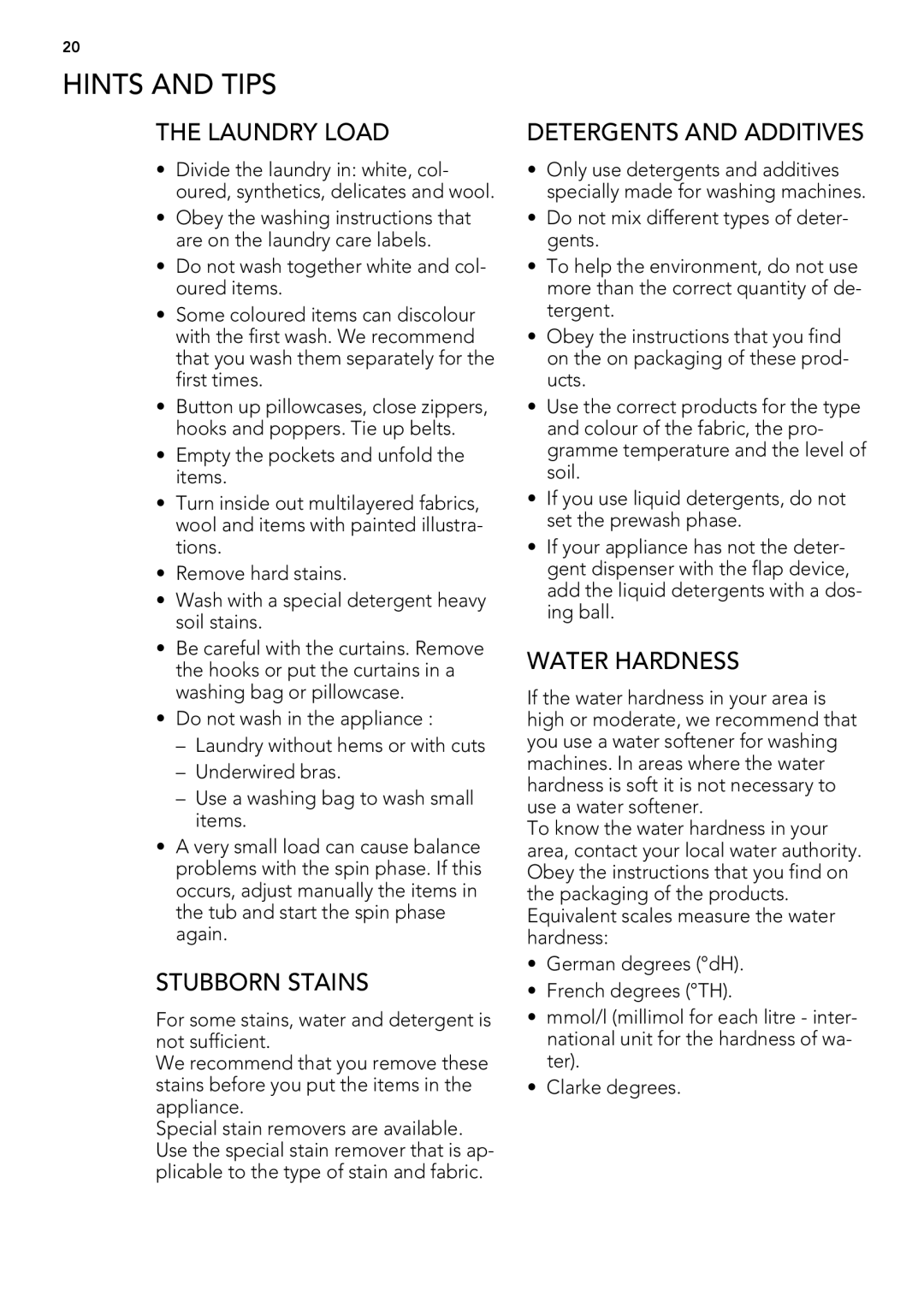20
HINTS AND TIPS
THE LAUNDRY LOAD
•Divide the laundry in: white, col- oured, synthetics, delicates and wool.
•Obey the washing instructions that are on the laundry care labels.
•Do not wash together white and col- oured items.
•Some coloured items can discolour with the first wash. We recommend that you wash them separately for the first times.
•Button up pillowcases, close zippers, hooks and poppers. Tie up belts.
•Empty the pockets and unfold the items.
•Turn inside out multilayered fabrics, wool and items with painted illustra- tions.
•Remove hard stains.
•Wash with a special detergent heavy soil stains.
•Be careful with the curtains. Remove the hooks or put the curtains in a washing bag or pillowcase.
•Do not wash in the appliance :
–Laundry without hems or with cuts
–Underwired bras.
–Use a washing bag to wash small items.
•A very small load can cause balance problems with the spin phase. If this occurs, adjust manually the items in the tub and start the spin phase again.
STUBBORN STAINS
For some stains, water and detergent is not sufficient.
We recommend that you remove these stains before you put the items in the appliance.
Special stain removers are available. Use the special stain remover that is ap- plicable to the type of stain and fabric.
DETERGENTS AND ADDITIVES
•Only use detergents and additives specially made for washing machines.
•Do not mix different types of deter- gents.
•To help the environment, do not use more than the correct quantity of de- tergent.
•Obey the instructions that you find on the on packaging of these prod- ucts.
•Use the correct products for the type and colour of the fabric, the pro- gramme temperature and the level of soil.
•If you use liquid detergents, do not set the prewash phase.
•If your appliance has not the deter- gent dispenser with the flap device, add the liquid detergents with a dos- ing ball.
WATER HARDNESS
If the water hardness in your area is high or moderate, we recommend that you use a water softener for washing machines. In areas where the water hardness is soft it is not necessary to use a water softener.
To know the water hardness in your area, contact your local water authority. Obey the instructions that you find on the packaging of the products. Equivalent scales measure the water hardness:
•German degrees (°dH).
•French degrees (°TH).
•mmol/l (millimol for each litre - inter- national unit for the hardness of wa- ter).
•Clarke degrees.
